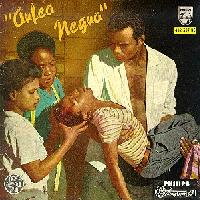 Black Orpheus
Black OrpheusThe film and bossa nova
By Wayne Whitwam
 Black Orpheus
Black Orpheus
The film and bossa nova
By Wayne Whitwam
Before the world heard Astrud Gilberto's whispy voice, before they knew of Stan Getz' velvety sax, they saw Black Orpheus. The film (in Portuguese, Orfeu Negro) put a face on a new style of samba that was fresh, romantic and very accessible to jazz hipsters. It was later called bossa nova (or "new wave" or "new groove"). Only a year before (November 1957), Antonio Carlos Jobim (and Newton Mendonca) had released the album Desafinado, featuring this new style of samba, incorporating it with jazz stylings, poetic lyrics sung by João Gilberto, and a 4 on 3 stammering rhythm. Jobim and Luis Bonfa wrote the soundtrack to the motion picture. This 1959 Cannes Film Festival Grand Prize winner (and Oscar's Best Foreign Film, and a Golden Globe winner) was based on the Orpheus-Eurydice legend but updated and played against the colorful background of Carnival in Brazil, featuring an all-Black cast. French director Marcel Camus created the movie from Vinícius de Moraes musical play Orfeu da Conceição."
More than just showcasing samba, Black Orpheus brought this music to life, making Antonio Carlos Jobim and Luis Bonfa international stars. From the very opening title scene, where favalistas burst through an ancient frieze of Orpheus and Eurydice, to the climactic Carnival parade, music pervades practically every moment of the film. Even the streetcars seem to dance.
|
|
The music is timeless. The soundtrack sold millions. United States jazz musicians like Stan Getz and Charlie Byrd began to cover Orpheus numbers like "A Felicidade" and "Manha de Carnaval" (Morning of Carnival) with as much enthusiasm as other popular Jobim songs like "Corvacado" and "One Note Samba." As bossa nova began to grow in the U.S., Getz along with João Gilberto and his wife, Astrud, released "The Girl from Ipanema" in early 1963. This created a big hit in the U.S. and Europe, and virtually sent the whole bossa nova movement into orbit. Throughout the mid-Sixties all-things-Brazilian became an integral part of world culture. Bossa nova would have become fashionable without Black Orpheus. However the film brings the music alive. - Wayne Whitwam
Other Resources on RootsWorld:
An over view of popular music styles in Brazil
Reviews of some recordings by Brazilian artists
A talk with Carlinhos Brown
More about Milton Nascimento
© 1998 - Cliff Furnald / RootsWorld